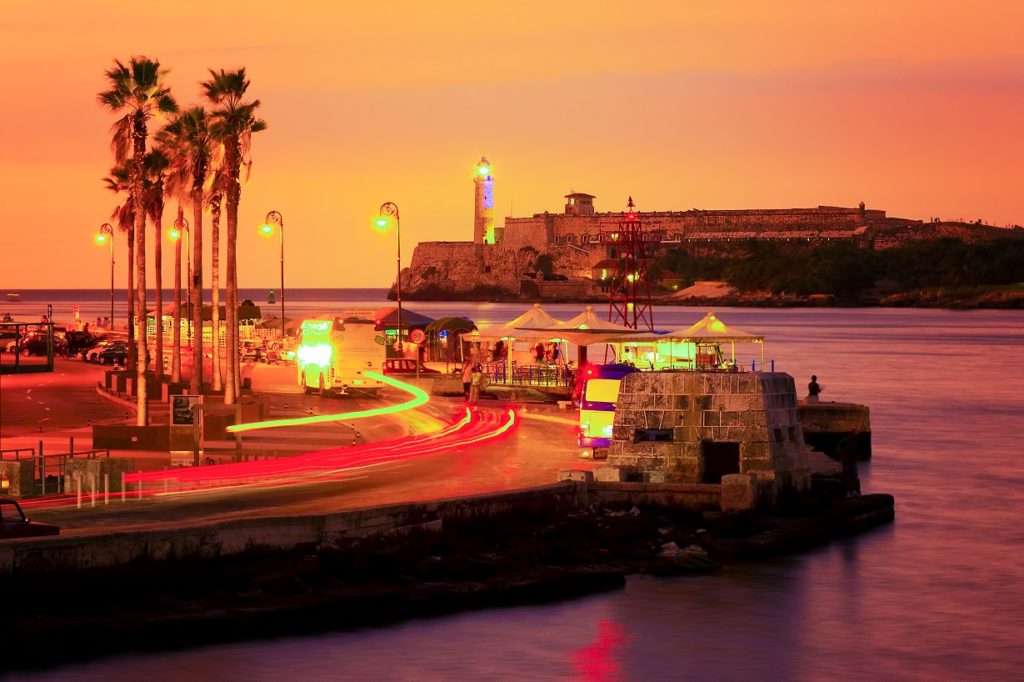Toll Free: 1-877-815-4227
 International: 1-603-516-0200
International: 1-603-516-0200

Toll Free: 1-877-815-4227
International: 1-603-516-0200

In mid-December, President Obama announced that the United States would begin working on improving relations with Cuba following a prisoner exchange. New regulations were then published on January 16, allowing Americans to travel to the Caribbean island more easily than at any time within the last 50 years. While things are looking up and more changes are to come, it is not yet as simple as booking a flight and jetting off. Read more about American travel to Cuba, including who can go and how to get there.
There are now 12 purposes for which Americans may visit Cuba without having to apply for a license on a case-by-case basis. Tourism is still banned by the embargo though, so don’t get your hopes up for a beach getaway just yet. Several of the legal categories of travel to Cuba include:
Previously, Americans wanting to travel to Cuba under some of the 12 categories had to apply for a license, an intimidating process that could take months. The new regulations simply require travelers to mark a box indicating the purpose of their trip and keep receipts of their travel transactions for 5 years after they return. Most travelers are also expected to have a full-time schedule of activities related to their category of travel.
It is unclear who will keep track of visitors to Cuba and how at this time. Before the new regulations, authorized travel agents who booked travelers’ flights and hotels were required to hold a special license from the Treasury Department and ensure that their travelers complied with Treasury requirements. Since this is no longer the case, many travel experts are wondering if the Obama administration will monitor people’s travel itineraries. Signing an affidavit saying you are going to Cuba for a particular purpose and instead spending the week at the beach, however, is illegal.
One of the most popular ways for Americans to visit Cuba is on a people-to-people trip, an educational program that falls into one of the 12 categories of general-license travel. Anyone can join one of these trips, for which an itinerary is already planned out. They aren’t cheap, though—about $2,500 to $4,000 per week—as they include full schedules of meetings, lectures, and visits to artists’ studios, small businesses, or community projects, along with accommodations and flights.
Flights to Cuba have been run by licensed charter operations up to this point. Most people find a connection flight in Miami, but there is talk of re-introducing a flight from New York. The new regulations allow any commercial airline to operate flights to Cuba. Companies like American Airlines, Delta Air Lines, and United Airlines have expressed interest, but it could take a year or more to negotiate air service agreements between the countries’ aviation authorities.
Non-American commercial airlines that fly to Cuba from many destinations are another option. Americans who meet Treasury requirements can fly through a third country like Mexico, Panama, Grand Cayman, or Canada. This option may even end up being less costly than taking a charter flight.
Cuba’s already-limited selection of high-end hotels will become overwhelmed if the number of American visitors increases significantly. Some tour operators are already block-booking rooms through 2016.
Chief executive of Havana-based Cuba Travel Network Eddie Lubbers estimated that about 125,000 to 150,000 rooms would need to be added over the next few years to meet demand.
Another option are bed-and-breakfasts, which include the chance to meet Cuban families and provide good meals. Also known as casas particulares, these accommodations can be found in Havana and popular tourist towns like Trinidad, Vinales, and Cienfuegos. Finding a casa online is not a simple process, so you can also book them through travel agents.
If you do plan on visiting Cuba, it is important to be prepared financially and know the rules.
Although the new regulations will allow American travelers to Cuba to pay for expenses with an American credit card, it is unclear when banks will begin offering the service. There are also very few ATMs in Cuba, and many establishments lack the means to process credit card payments. The island will be cash only for a while. Another good idea is to take pounds and euros, which get a better exchange rate in Cuba than the U.S. dollar.
Under the new regulations, Americans can bring back up to $400 worth of souvenirs—including $100 worth of cigars. (Tip: If you know much about good Cuban cigars, you’ll know that $100-worth won’t fit in your humidor).
While it may be some time until we see Cuba timeshares, it seems as though they have true potential considering the direction in which American and Cuban relations are going. Melia Resorts, a Spanish luxury resort chain, already has several locations throughout the island. Old Havana’s Parque Central also boasts some of the best hotels, with work having begun on the 250-room Manzana de Gomez. With the environment and market already available, Cuba could have a big influence on the vacation ownership industry.
We will be keeping an eye on this as America and Cuba make progress, so check back for more updates. If you’re craving an escape to paradise, Caribbean timeshares are always available in the many surrounding islands.